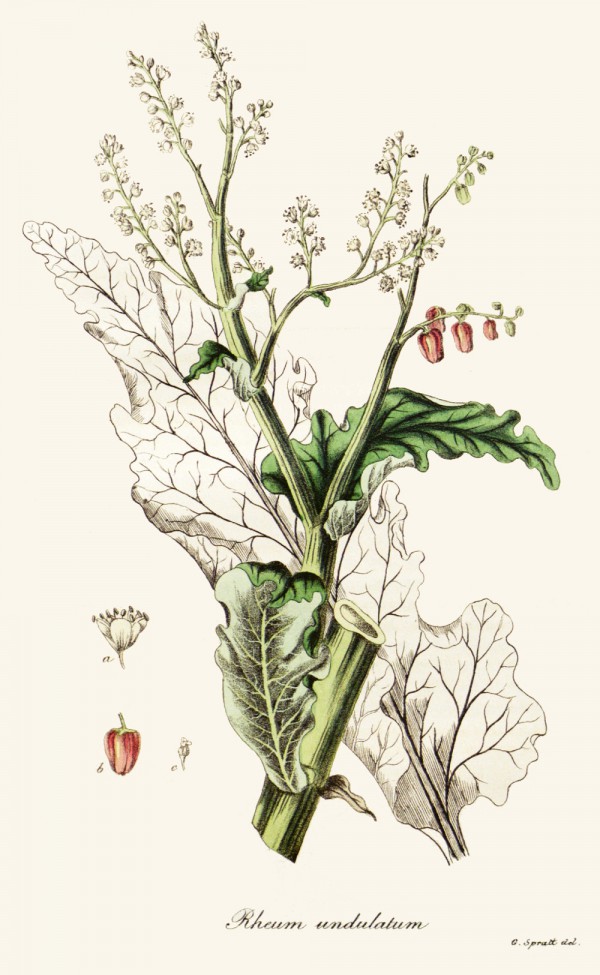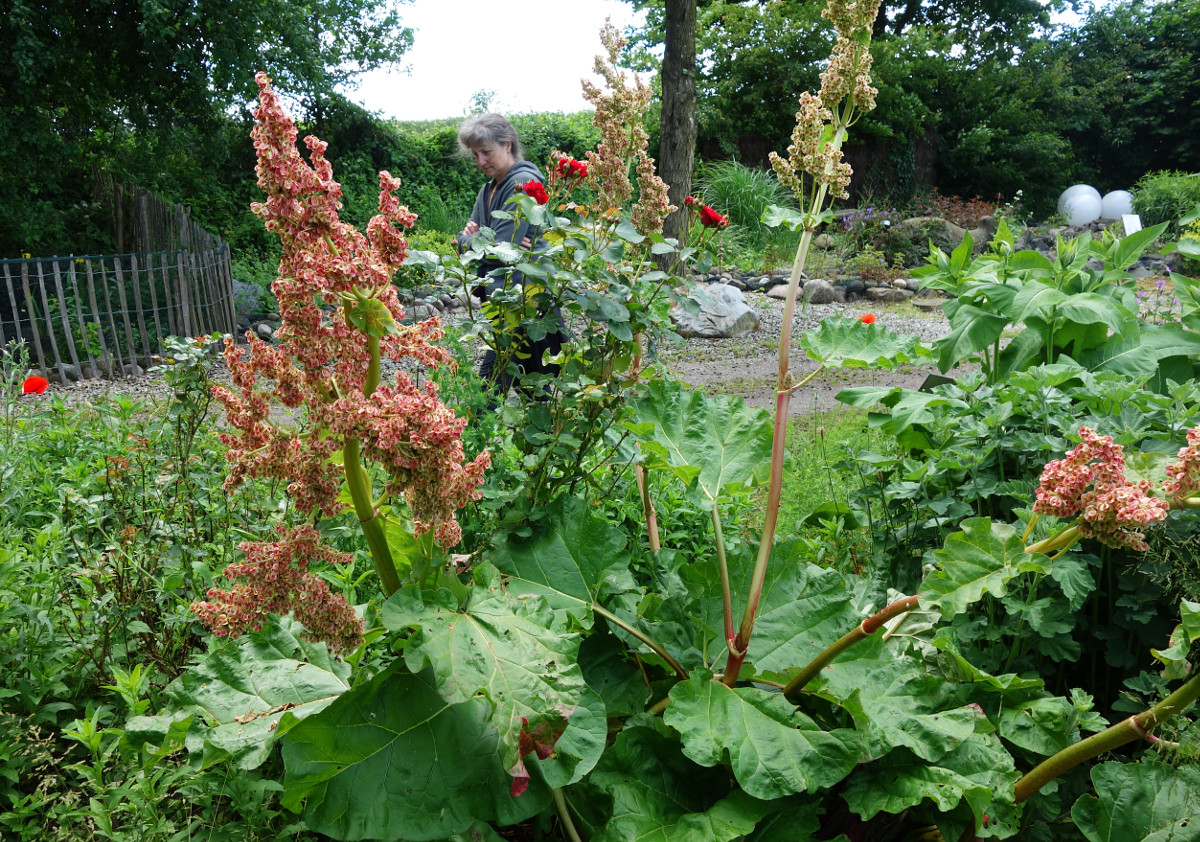Rheum rhabarbarum L. - syn.Rhabarbarum verum Garsault; Rheum franzenbachii Münter; Rheum undutalum L. - Polygonaceae
rhubarb, Rhabarber
Herbaceous perennial, 0.5-1.5m tall, native to China, cultivated in Asia and Europe; leaves triangular-ovate, subovate, broadly cordate, or narrowly triangular, large, 12-40 × 10-30cm, margin crispate or sinuate; flowers white-green or yellow-white.
http://www.efloras.org/florataxon.aspx?flora_id=2&taxon_id=242343402
„Volatiles of rhubarb (Rheum rhabarbarum L.) stalks were isolated by means of vacuum headspace method and analyzed by capillary gas chromatography-mass spectrometry. Fifty-nine components were reported for the first time in rhubarb. A striking feature of the extracts obtained is the preponderance (∼65%) of compounds with C6 skeletons. In addition to unsaturated C6 aldehydes and alcohols, substantial amounts of the less common (E)-2- and (E)-3-hexenoic acid were detected. Gas chromatography-olfactometry and determination of odor activity values revealed the sensory importance of the C6 compounds to the aroma of rhubarb. Comparative experiments involving the inhibition of enzyme activities revealed that the initial spectrum of C6 components is changed due to subsequent isomerization and reductions. Thus, contributions of (Z)-3-hexenal and the unsaturated acids decrease, and (E)-2-hexenal/(E)-2-hexenol play major sensory roles.“
[Volatile constituents of uncooked rhubarb (Rheum rhabarbarum L.) stalks. Dregus, M., Engel, K. H., Journal of agricultural and food chemistry, Vol.51(22), 2003, 6530-6536]
 (E)-2-hexenoic acid (cheesy acidic honey) |  (E)-3-hexenoic acid (cheesy fatty fruity) |  (R)-2-methylbutanoic acid (cheesy sweat) |  (S)-2-methylbutanoic acid (pleasant, sweet, fruity) |
Enantiomeric ratios (R:S) of the rhubarb stalk volatiles 2-methylbutanol, 4-methylhexanol, and 2-methylbutanoic acid were on average (80:20), (90:10), and (65:35) respectively. Odours have been described as follows: (S)-2-methylbutanol (ethereal, fresh), (R)-2-methylbutanol (fermented, fatty, musty), (S)-4-methylhexanol (spicy, nutty, slightly green, sour), (R)-4-methylhexanol (green fatty, nut- and carrotlike), (S)-2-methylbutanoic acid (pleasant, sweet, fruity), (R)-2-methylbutanoic acid (cheesey, sweat), (R)- and (S)-4-methylhexanoic acid (both acidic, fatty).
[Enantioselective analysis of methyl-branched alcohols and acids in rhubarb (Rheum rhabarbarum L.) stalks., Dregus, M., Schmarr, H.G., Takahisa, E., Engel, K.H., Journal of agricultural and food chemistry, 51(24), 2003, 7086-7091]
„Rhubarb is an easy to process vegetable which does not necessarily need a special mash treatment like enzymation or heating to get high juice yields. The chemical composition of rhubarb juice is characterised by a low relative density and low Brix (4-4.8 °Brix), due to a low sugar content (about 12 g/l), whereas the total acidity is high (about 17 g/l). The major acid is malic acid, followed by oxalic acid and citric acid. The polyphenol content and the antioxidative capacity (TEAC) is relatively low; the same holds for anthocyanins (11.3-14.8 mg/l) which are consisting of cyanidin-3-rutinoside and small amounts of cyaniding-3-glucoside and delphinidin-3-rutinoside. Rhubarb juice contains a high amount of minerals, esp. potassium (up to 4000 mg/l), and magnesium (average 100 mg/l), whereas calcium is not present due to precipitation with oxalic acid. As is the case for some other vegetables juices, rhubarb juice contains high concentrations of nitrate (about 850 mg/l).“
[Processing and chemical composition of rhubarb (Rheum rhabarbarum) juice., Will, F., Dietrich, H., LWT-Food Science and Technology, Vol.50(2), 2013, 673-678]

Rheum rhabarbarum L. as Rheum undulatum L.
Woodville, W., Hooker, W.J., Spratt, G., Medical Botany, 3th edition, vol.5, t.24 (1832)
http://plantillustrations.org/species.php?id_species=874417

Fruiting rhubarb, KräuterPark Stolpe June 2017, CC BY-SA 3.0, Author: Andreas Kraska